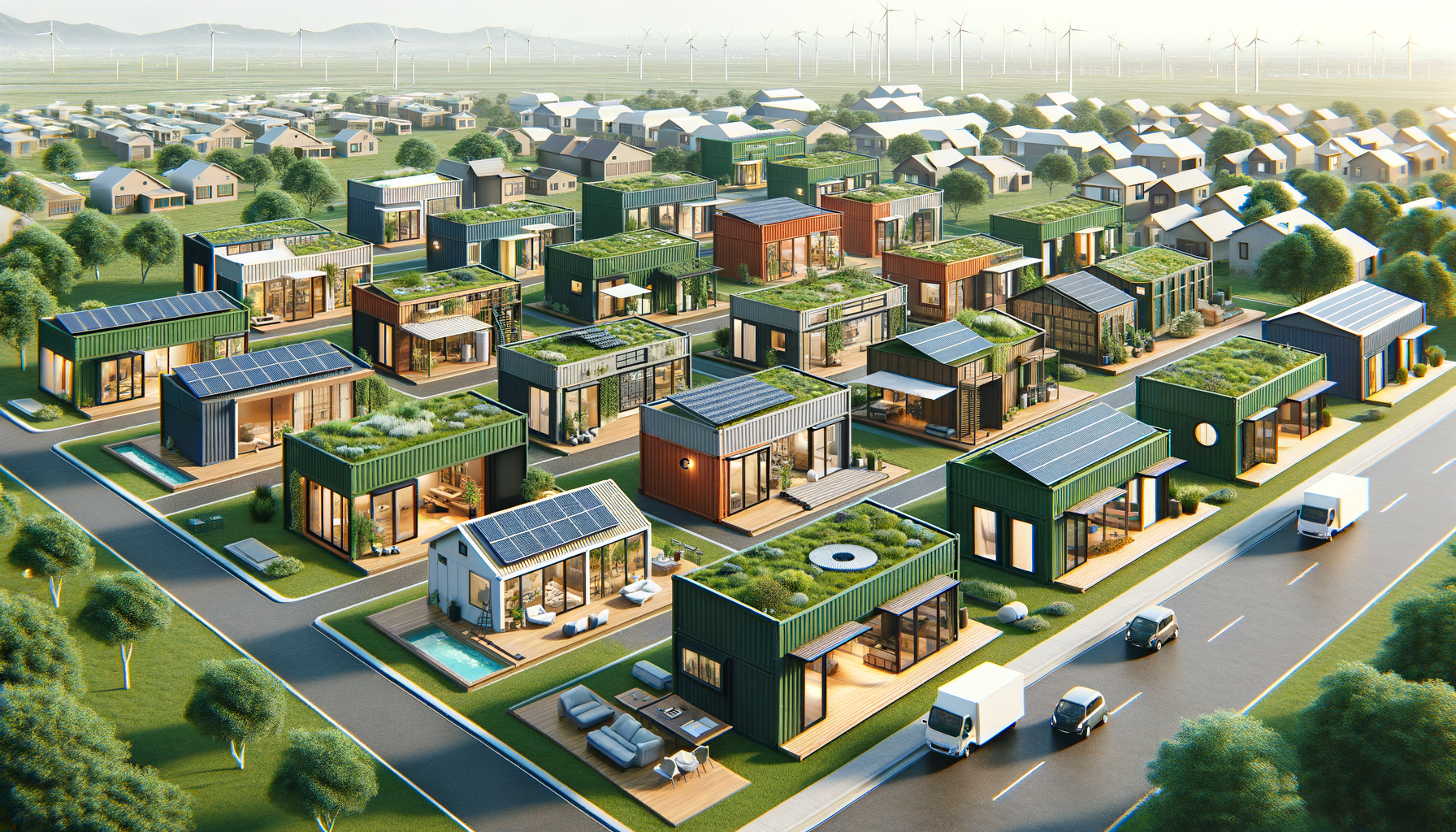Economical Container Homes: Your Guide to Outstanding Value and Design
Explore the world of affordable, trend-setting container homes that successfully blend cost-effectiveness with contemporary design, without sacrificing quality or the potential for personalization.

The Emergence of Container Homes in the Housing Market
Container homes have emerged as a compelling alternative in the affordable housing sector. These innovative structures repurpose shipping containers, transforming them into sustainable and cost-effective living spaces. The concept has gained traction due to the rising costs of traditional housing and the increasing demand for environmentally friendly solutions. Container homes address these issues by offering a unique blend of affordability, sustainability, and versatility.
Originally used for transporting goods across the globe, shipping containers are designed to withstand harsh weather conditions, making them a durable option for housing. The global surplus of unused containers has provided a readily available resource for construction, significantly reducing material costs. This surplus, combined with the ease of modification, allows for a quick and efficient building process, often completed in a fraction of the time required for traditional homes.
The appeal of container homes extends beyond their affordability. They offer a blank canvas for creativity, with endless possibilities for customization. Homeowners can stack, arrange, and modify containers to suit their preferences, resulting in unique architectural designs. This flexibility has attracted a diverse range of individuals, from eco-conscious millennials to retirees seeking a minimalist lifestyle.
Environmental Benefits of Container Homes
Container homes are not only cost-effective but also environmentally friendly. By repurposing used shipping containers, they contribute to reducing waste and minimizing the environmental impact of new construction. Traditional building methods often involve significant resource consumption and waste generation. In contrast, container homes utilize existing materials, promoting sustainability.
Additionally, the compact size and efficient design of container homes result in lower energy consumption. Many container homes incorporate energy-efficient features such as solar panels, rainwater harvesting systems, and green roofs, further enhancing their eco-friendly appeal. These features not only reduce the carbon footprint but also offer long-term savings on utility bills for homeowners.
The environmental benefits of container homes align with the growing trend towards sustainable living. As more individuals and communities prioritize eco-friendly practices, container homes provide a viable solution that meets both financial and environmental goals. This alignment with sustainability trends has positioned container homes as a forward-thinking choice in the housing market.
Design Flexibility and Customization
One of the most attractive aspects of container homes is their design flexibility. The modular nature of shipping containers allows for endless possibilities in terms of layout and aesthetics. Homeowners can combine multiple containers to create larger living spaces or opt for a single container for a compact, minimalist home. This versatility enables individuals to tailor their homes to their specific needs and preferences.
Container homes can be customized with various finishes and materials, ranging from rustic to modern styles. The interior can be fitted with insulation, drywall, and high-quality fixtures to create a comfortable living environment. Exterior modifications, such as adding decks, patios, or rooftop gardens, enhance the overall appeal and functionality of the home.
The ability to personalize container homes extends to the incorporation of smart home technology. Many homeowners integrate advanced systems for lighting, security, and climate control, enhancing convenience and efficiency. This adaptability makes container homes suitable for a wide range of lifestyles and preferences, from tech-savvy individuals to those seeking a simple, off-grid existence.
Cost-Effectiveness and Financial Accessibility
Container homes offer a financially accessible option for those seeking affordable housing solutions. The initial cost of purchasing and modifying a shipping container is significantly lower than traditional home construction. This affordability makes container homes an attractive option for first-time homeowners, young families, and individuals looking to downsize.
The reduced construction time and labor costs associated with container homes contribute to their cost-effectiveness. Many container homes can be completed in a matter of weeks, compared to months or even years for conventional homes. This expedited timeline not only reduces costs but also allows homeowners to move in sooner, providing immediate relief from housing challenges.
Moreover, container homes offer potential savings in maintenance and energy expenses. Their durable construction requires minimal upkeep, and the integration of energy-efficient systems can lead to lower utility bills. These financial benefits, combined with the affordability of container homes, make them a practical choice for budget-conscious individuals seeking quality housing.
Challenges and Considerations
While container homes present numerous advantages, there are challenges and considerations to keep in mind. One of the primary concerns is ensuring proper insulation and ventilation. Shipping containers are made of metal, which can lead to temperature fluctuations if not adequately insulated. Addressing this issue requires careful planning and investment in high-quality insulation materials.
Another consideration is the zoning and regulatory requirements for container homes. Regulations vary by location, and obtaining the necessary permits can be a complex process. Prospective homeowners must research local building codes and work with professionals who have experience in container home construction to navigate these challenges successfully.
Despite these challenges, the popularity of container homes continues to grow as more people recognize their potential. With careful planning and execution, container homes can provide a sustainable, affordable, and stylish housing solution that meets the needs of modern living.